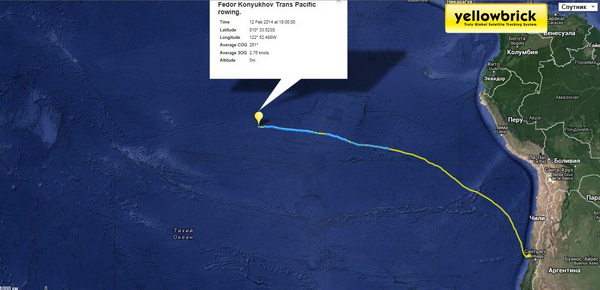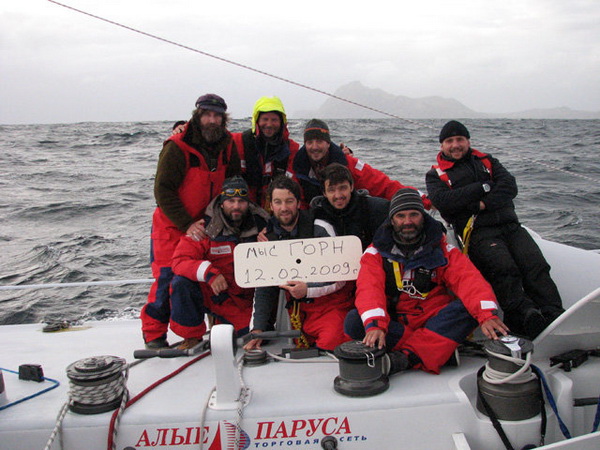1000 miles until the French Polynesia
Fedor reports via satphone: “Tourgoyak and I have left 70 more miles behind during last 24 hours, having only slightly less than 1000 miles until the islands of the French Polynesia. This is great news: once I reach Fatu Hiva (the Marquesas Islands), it would mean that I’m close to being half way done with the transpacific crossing. The easterly wind is stable, 15 knots. The seas are crestless, 2-2.5 in height. The boat is going really fast. I’m always keeping the harness on. In case of falling overboard it would be nearly impossible to catch a light carbon row boat that is carried by the current and the trade winds. Even for an experience swimmer such challenge would be very difficult. I don’t want to temp my fate and so I keep the harness on even when asleep, because there are times when I need to jump out onto the deck in just a few seconds and there is no time to lose fiddling with the harness. Tonight there is a full moon. The nights are calm; the ocean is bulged and breathes deeply. There is no need for a flashlight for the moonlight shines upon the deck brightly. I’ll be approaching the islands under the old moon which means the ocean will be less calm and more chaotic.

This morning I caught a small calamari. I had a fishing line dragging overboard and luckily was able to snatch a fresh breakfast. Scalding calamari with some boiling water was sufficient, and it turned out be a very welcoming addition to my regular menu. I have read and reread dozens of times “The Kon-Tiki Expedition: By Raft Across the South Seas” by Thor Heyerdahl. How much the ocean has changed since 1947! In his book Heyerdahl writes that he and his crew would catch all sorts of fish: tuna, mahi-mahi, bonitos, and collect large amounts of flying fish which they would fry on a frying pan for breakfast each morning. My experience tells a different story: between 80° to 120° of the Western Longitude the Pacific Ocean is absolutely void of any living edible thing that I can get my hands on. Giving the fact that I spend 16 hours a day on deck, only 30 cm from the surface of the ocean, this emptiness is very peculiar and puzzling to me. I pay close attention to my surroundings, but there is nothing to see as far as the ocean life goes. The contrast between my observations and the ones made by Heyerdahl is striking.

Today I talked on the phone to one of my friends who reminded me that it’s been five years since he, myself and six more people crossed the Pacific Ocean with a course of New-Zeeland – Cape Horn – Falkland Islands – Antigua – England on sail boat “Alye Parusa”. Once again, I’m amazed at how fast time flies. That was my fifth sailing around Cape Horn, but the first one with a crew. We had a goal to see Cape Horn during the day and arranged our watch schedule accordingly.

I’m in a great mood looking forward to rowing the remaining 1000 miles to Fatu Hiva. It’s as if I can see a light at the end of a tunnel. In the first month, when I would look at the map between the South America and Australia, the ocean looked so vast, the computer map couldn’t even fit full map on screen. Now, however, I see the land on the map and even though I am not planning to stop on any of the islands the picture of me moving closer to them is very encouraging. I miss the smell of land, the sight of birds flying in the sky. I am with you. Fedor.”
The map of the Tourgoyak’s course: http://yb.tl/konyukhov2
The detailed map of the course: www.oceanrowing.com/Konyukhov/Pacific2013/dist_map.htm
Translated by Tatiana Koreski